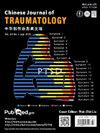Intramedullary administration of tranexamic acid reduces bleeding in proximal femoral nail antirotation surgery for intertrochanteric fractures in elderly individuals: A randomized controlled trial
IF 1.9
4区 医学
Q2 ORTHOPEDICS
引用次数: 0
Abstract
Purpose
Intertrochanteric fractures undergoing proximal femoral nail antirotation (PFNA) surgery are associated with significant hidden blood loss. This study aimed to explore whether intramedullary administration of tranexamic acid (TXA) can reduce bleeding in PFNA surgery for intertrochanteric fractures in elderly individuals.
Methods
A randomized controlled trial was conducted from January 2019 to December 2022. Patients aged over 60 years with intertrochanteric fractures who underwent intramedullary fixation surgery with PFNA were eligible for inclusion and grouped according to random numbers. A total of 249 patients were initially enrolled, of which 83 were randomly allocated to the TXA group and 82 were allocated to the saline group. The TXA group received intramedullary perfusion of TXA after the bone marrow was reamed. The primary outcomes were total peri-operative blood loss and post-operative transfusion rate. The occurrence of adverse events was also recorded. Continuous data was analyzed by unpaired t-test or Mann-Whitney U test, and categorical data was analyzed by Pearson Chi-square test.
Results
The total peri-operative blood loss (mL) in the TXA group was significantly lower than that in the saline group (577.23 ± 358.02 vs. 716.89 ± 420.30, p = 0.031). The post-operative transfusion rate was 30.67% in the TXA group and 47.95% in the saline group (p = 0.031). The extent of post-operative deep venous thrombosis and the 3-month mortality rate were similar between the 2 groups.
Conclusion
We observed that intramedullary administration of TXA in PFNA surgery for intertrochanteric fractures in elderly individuals resulted in less peri-operative blood loss and decreased transfusion rate, without any adverse effects, and is, thus, recommended.
髓内注射氨甲环酸可减少老年人股骨近端钉抗旋转手术治疗转子间骨折时的出血:随机对照试验
目的:接受股骨近端钉抗旋转(PFNA)手术的转子间骨折与大量隐性失血有关。本研究旨在探讨髓内注射氨甲环酸(TXA)能否减少老年人股骨转子间骨折 PFNA 手术中的出血量:方法:2019年1月至2022年12月进行了一项随机对照试验。年龄在60岁以上、接受PFNA髓内固定手术的转子间骨折患者均符合纳入条件,并根据随机编号进行分组。共有249名患者被初步纳入,其中83人被随机分配到TXA组,82人被分配到生理盐水组。TXA组在骨髓扩孔后接受髓内TXA灌注。主要结果是围手术期总失血量和术后输血率。此外,还记录了不良事件的发生情况。连续数据采用非配对 t 检验或 Mann-Whitney U 检验,分类数据采用 Pearson Chi-square 检验:TXA组的围手术期总失血量(毫升)明显低于生理盐水组(577.23 ± 358.02 vs. 716.89 ± 420.30,P = 0.031)。TXA 组的术后输血率为 30.67%,生理盐水组为 47.95%(P = 0.031)。两组的术后深静脉血栓形成程度和 3 个月死亡率相似:我们观察到,在老年转子间骨折的 PFNA 手术中,髓内注射 TXA 可减少围手术期失血,降低输血率,且无任何不良反应,因此值得推荐。
本文章由计算机程序翻译,如有差异,请以英文原文为准。
求助全文
约1分钟内获得全文
求助全文
来源期刊

Chinese Journal of Traumatology
ORTHOPEDICS-
CiteScore
3.80
自引率
4.80%
发文量
1707
审稿时长
28 weeks
期刊介绍:
Chinese Journal of Traumatology (CJT, ISSN 1008-1275) was launched in 1998 and is a peer-reviewed English journal authorized by Chinese Association of Trauma, Chinese Medical Association. It is multidisciplinary and designed to provide the most current and relevant information for both the clinical and basic research in the field of traumatic medicine. CJT primarily publishes expert forums, original papers, case reports and so on. Topics cover trauma system and management, surgical procedures, acute care, rehabilitation, post-traumatic complications, translational medicine, traffic medicine and other related areas. The journal especially emphasizes clinical application, technique, surgical video, guideline, recommendations for more effective surgical approaches.
 求助内容:
求助内容: 应助结果提醒方式:
应助结果提醒方式:


